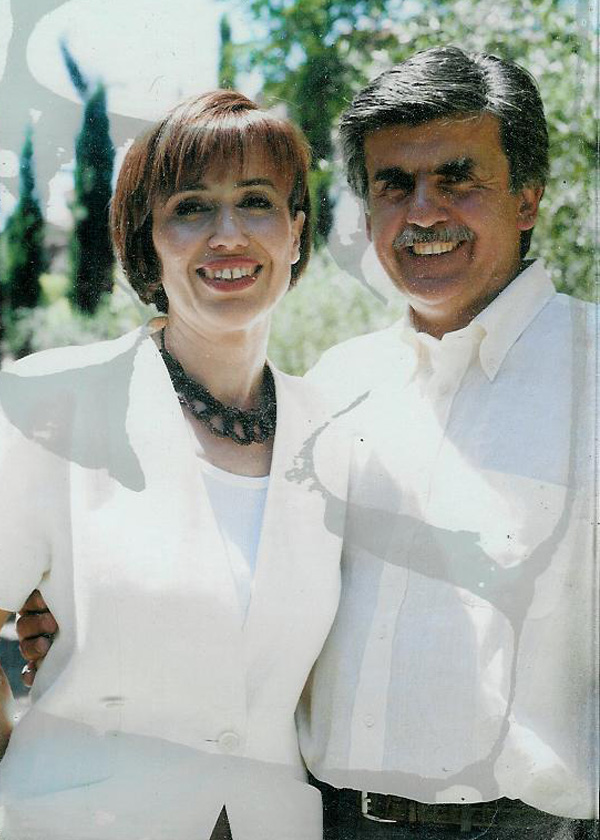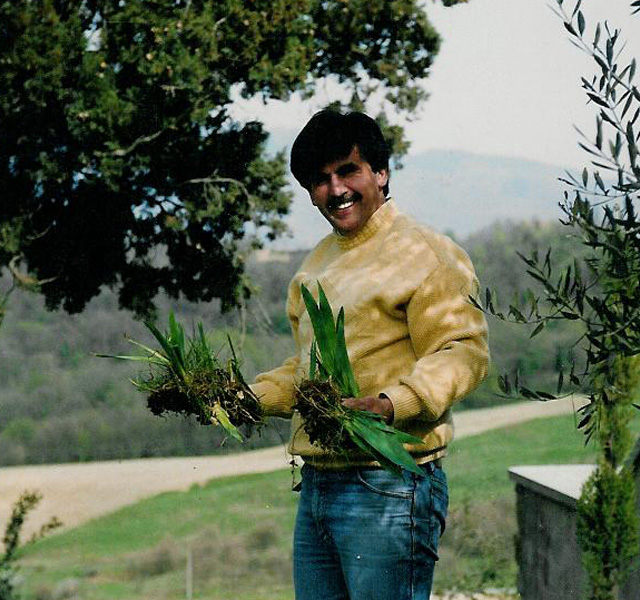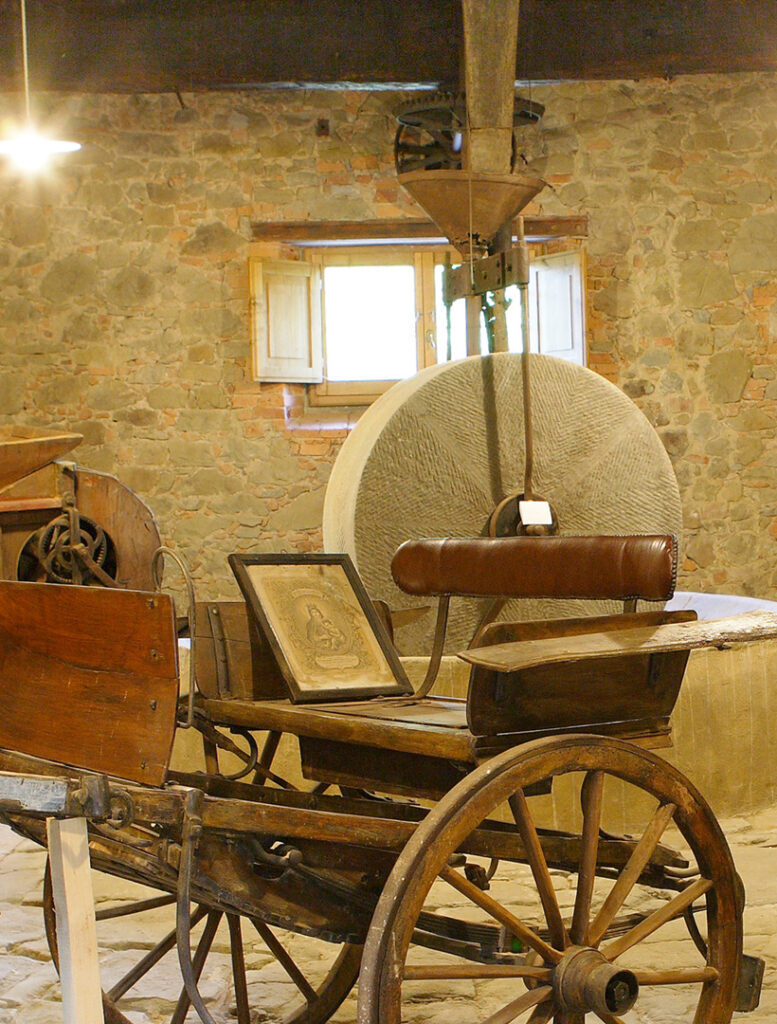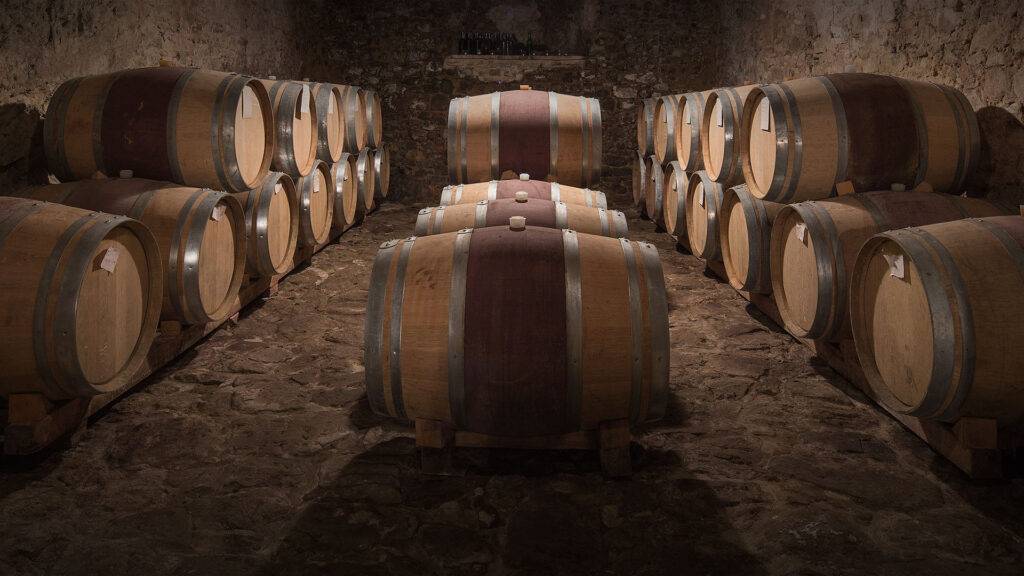The Family
The Origins
The story of a territory and the love of a family
The secret flower of Villa Barberino is the patience. Its perfume hides a beautiful story, made up over the centuries by servants and masters, slaves and marquises, settlers and landowners, ending up in the hands of a family today, who love each other intensely.


The ceiling beams had torn, the tiles had shattered, the floors pulverized. The load-bearing walls of the houses had cracks on all sides. The doors no longer existed, at the top of some flights of stairs there were chasms as high as ten meters suspended in the void. Desolation was the absolute protagonist of a lonely and abandoned stage.
Some men of the village had taken advantage of the ruins to obtain chicken coops, garages or fences in some safer corners where to let the dogs sleep.
The ground floors, where the stables had been located in the previous decades, had completely disappeared from human sight. Outside, trees of all kinds, grass and rubble blocked the view from going any further. Inside, however, the collapsed tiles with the roof beams and the destroyed attics of the upper floors had completely devastated the entrances and covered everything.
Against the background of this strange pile of rubble, the dilapidated facade of the villa observed the whole, helpless and innocent. Perhaps the structure that most (albeit partially) was saved from the tyranny of human abandonment.
Its exterior plasterwork was gray and mostly discarded. They could be seen under stones and bricks built on top of each other. The window frames were completely discarded by the ravages of atmospheric agents and the mouth-blown glass of the eighteenth century was mostly smashed perhaps by the stupid games of some boy in the village.
The shutters where present, they were brown and without most of the doors. Like toothless old women of seventy years ago.
The appearance was gloomy and austere. One had the clear impression of being in front of a sort of witch’s house. The creaking noises coming from inside were disturbing.
There was no doubt whatsoever. Villa Barberino, or rather the centuries-old Fattoria di Meleto, was close to total destruction. Maybe another ten years would have been enough, and everything would have inexorably collapsed under the blows of time and abandonment.
The millennial history of one of the oldest outposts in the area would have crumbled into thin air.
Undoubtedly it would have been almost utopian to recover it. Perhaps it would have been easier to tear it down and build it again. But it is clear and trivial to say that it would have been a whole different story.
Today history has changed its course in that pile of rubble…
There is a plant in a corner of this garden, which in winter is sparse and bare, charmless and absent. It is just over two meters high and no one ever notices it, as it remains hidden behind a box hedge a few steps from a nineteenth-century tower with neo-Geulfi merlons on top. That awkward and anonymous plant is the most fascinating secret of Villa Barberino in Meleto, a fortification of very ancient origins, which is located halfway up the mountain whose ridge separates the Upper Valdarno from the Chianti, on a shelf once called Pian d’Avane.
Due to the strategic importance it held between the 13th and 14th centuries, the castle of Barberino (from the Greek toponym “impervious, barbaric place”) was linked to the history of the Florentine republic, at war with nearby Arezzo. From 1340 Meleto was the capital of the Avane League, a federation of municipalities in the Florentine countryside, which had its headquarters in the castle of Barberino, “habitation and residence of the notary and officials of said league” (from the Avane statute, 1412) . The oldest owner had been Guido da Meleto, who lived in Dante’s time in Florence, in the Santo Spirito district.
The Da Meleto family had remained in possession of the estate until 1590, after which it had passed to the Florentine families of the Capponi (16th and 17th centuries) and then to the Alamanni who in the 18th century, following the principles of the agrarian reforms of duke Pietro Leopoldo, enriched the complex with a mill and new farmhouses, giving life to the flourishing farm whose nucleus was represented by Villa Barberino.

The simple and infinite beauty of art is hidden in the most secret corners, chasing the history of Barberino, blood and sacrifice, sharpness and smiles.

Experiences

Visit the Museum
The museum of the Villa keeps tools
and utensils that tell the story of peasant life in the Tuscan countryside.

Winery Tour
Tastings and guided tours are organized inside the cellar, to discover Tuscan traditions…

